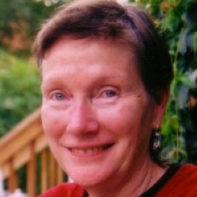When Trungpa Rinpoche started his youthful community in Boulder, Colorado, and Barnet, Vermont, in the very early ’70s, there was an immediate need for some kind of a ceremony to honor, recognize and legalize marriages for his community members.
One of the first recorded weddings took place in Barnet in 1973, at what was then Tail of the Tiger, between Lady Rich and Trungpa Rinpoche’s regent (principle student), Osel Tendzin. Soon after that, Marybeth and Jim Gritz married in Boulder.
In these weddings Rinpoche would emphasize friendship more than love:
“This particular gathering here is acknowledgment of man’s capability in friendship…egoless friendship…these two friends…are able to actually take a leap at this point beyond hesitation (to commit to) basic sanity and friendship.”
He would often add something to the effect that
the willingness to work with each other in a dharmic way would prevent World War III.
Rinpoche said what would create a successful couple was
“gentleness and the sense of openness within the light of the sitting practice of meditation.”
And then, as still continues, the couple would make six offerings symbolic of the paramitas or transcendent virtues: generosity, discipline, patience, exertion, meditation and prajna or insight—which included a hearty sense of humor.
These were the guidelines for marriage.
Then there would be the exchange of rings, the kiss and celebratory readings—for example, the Buddha’s “Unlimited Friendliness,” Maitri Bhavana, songs from Tilopa, Milarepa or some of Rinpoche’s own poems.
Then Rinpoche as preceptor (officiant) would toss rice and ring the meditation gong while chanting auspicious verses.
Usually parents and family were surprisingly pleased. Their hippie children looked almost respectable. In fact, often these wedding ceremonies became a gateway for parents and grandparents to learn and appreciate a bit about the Buddhadharma, if not to become actively involved. And this is still the case.
Many parents and siblings of the bride and groom were interested enough to read Rinpoche’s Meditation in Action. Dharma books were much more limited in the early ‘70s than they are now, so this represented a new interest for many. Sometimes what they took home was simply a realization that the Buddhadharma wasn’t a cult but rather, a 2,500 year-old tradition, or that there was a difference between being Buddhist and being Hindu, or that the “scene” their son, daughter, brother or sister was in, was okay and perhaps even “cool.”
Of course community members also found Rinpoche’s wedding talks inspiring and refreshing:
“Instead of building our own territory and fortification, we are trying to demonstrate a sense of friendliness. And these two friends (in this case the wedding of Doug and Heather Beall in April of ’76) have decided to commit themselves to each other to begin with, and then the vision is to expand that to the rest of sentient beings, to the rest of the world.”
So much for the nuclear family!
Then the flower representing exertion, the incense of patience, the light of meditation, the perfumed water of discipline, the food of generosity, and the musical instrument of prajna were placed on or beside the shrine by the bride and groom and the couple would say,
“Having offered these, may we attain wisdom and compassion so that we may help all sentient beings on the path of dharma [generally: truth; specifically in this case: teachings of Buddhism].”
Rinpoche would often conclude with something like,
“The ceremony itself is a symbol of how to conduct friendship with each other rather than purely obligation alone, and this sense of friendship, warmth, and sympathy with each other extends to the rest of the world.”
This might have seemed redundant, but he was really trying to make a point—that marriage between meditators was not just a private affair but was to be seen as a journey toward wakefulness, that inevitable irritation can also be seen as wakeful, and that whatever occurs, happy or sad, can be brought to the path as “workable.”
By practicing in this way, friendship can be extended to all.
After the ’76 Buddhist seminary and the first presentation of Shambhala meditation teachings, the community in Boulder moved from 1111 Pearl Street to the PIC Building, where it is still located.
There, during the marriage of Tony and Liza Matthews, Rinpoche’s language began to shift while the ceremony itself remained the same. He encouraged the couple to see that
“everyday, every hour, every minute the vision of the Great Eastern Sun [fundamentally awake, open human nature] of forward vision is constantly taking place without a flinch.”
From 1973-1977, Rinpoche performed more than 70 weddings, not including little shotgun weddings like mine performed in his office at 1111 Pearl Street with just a few friends. Then his regent began in 1977 to share some of the load—and some of these weddings were triple weddings! By 1980 the Regent was doing most of the weddings.
In great contrast, these days there are 25 preceptors authorized by the Province of Nova Scotia to perform either Buddhist or Shambhalian wedding ceremonies.








Read 8 comments and reply